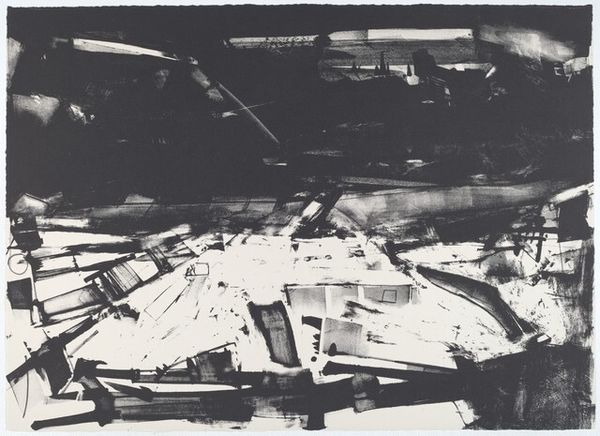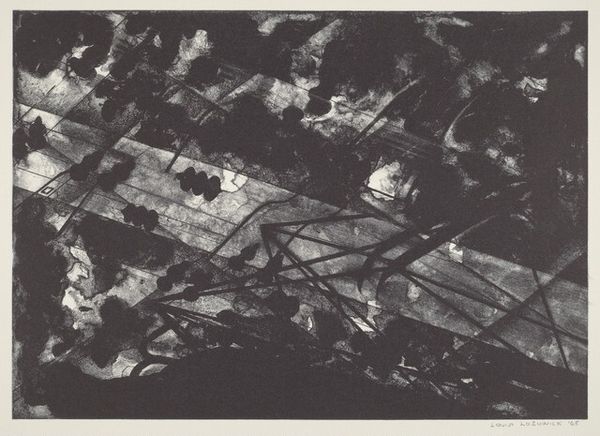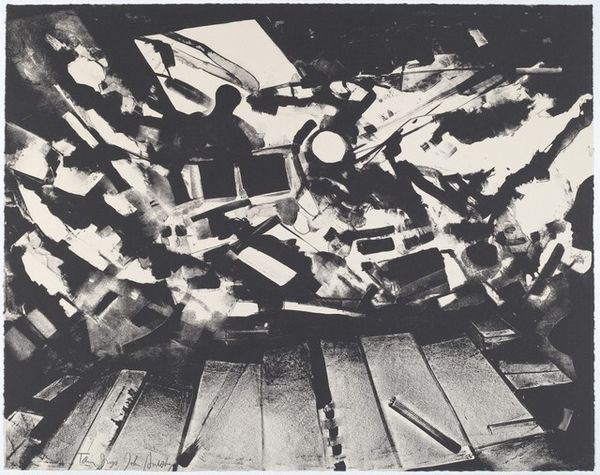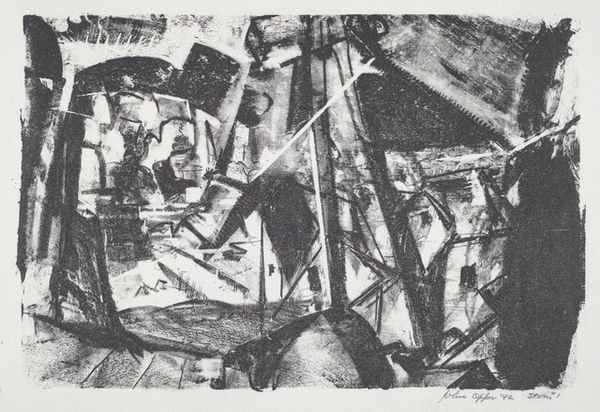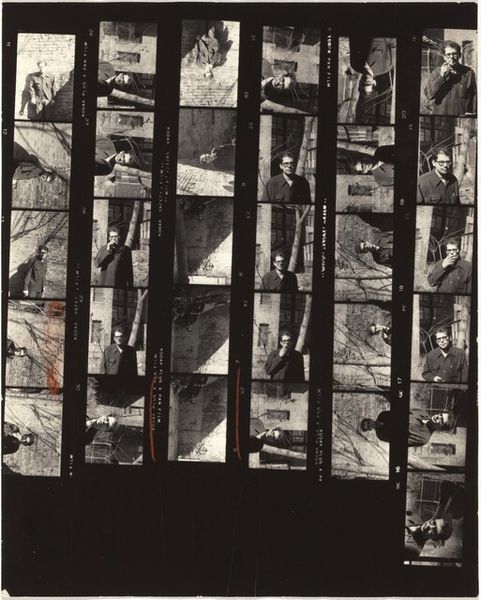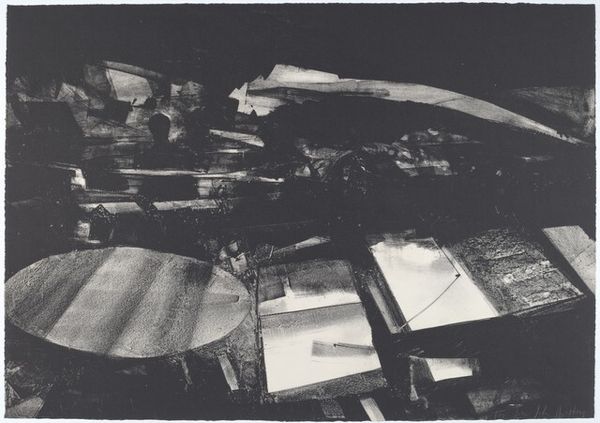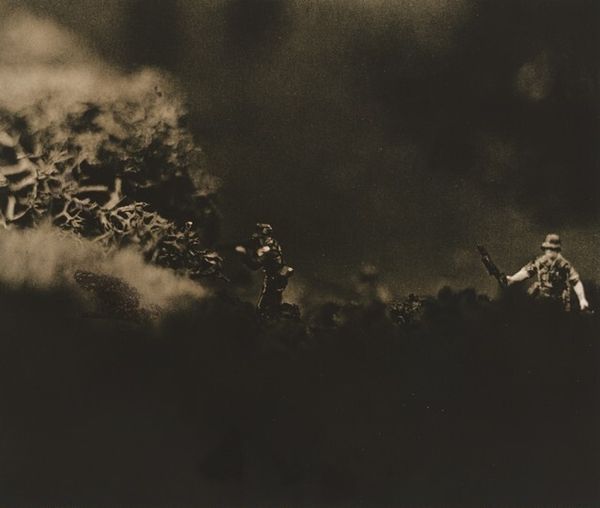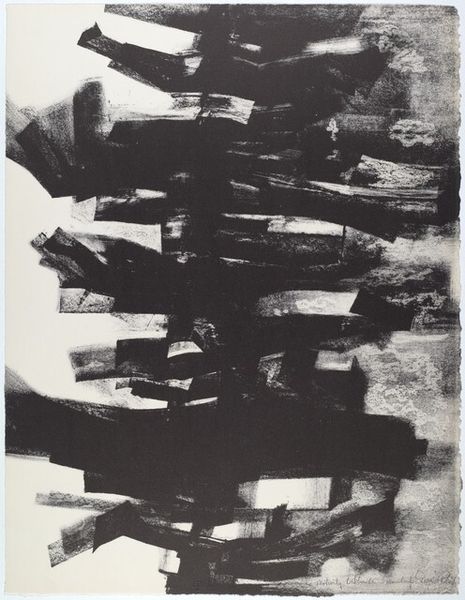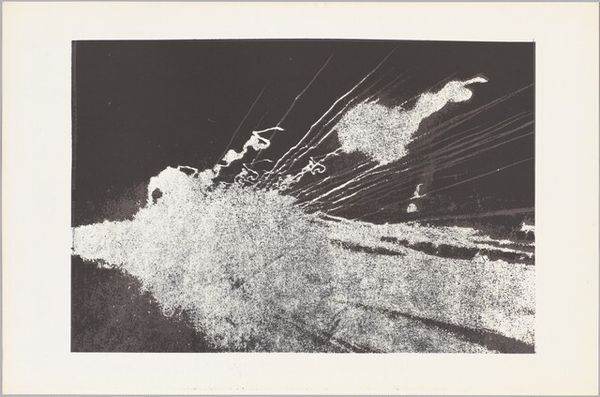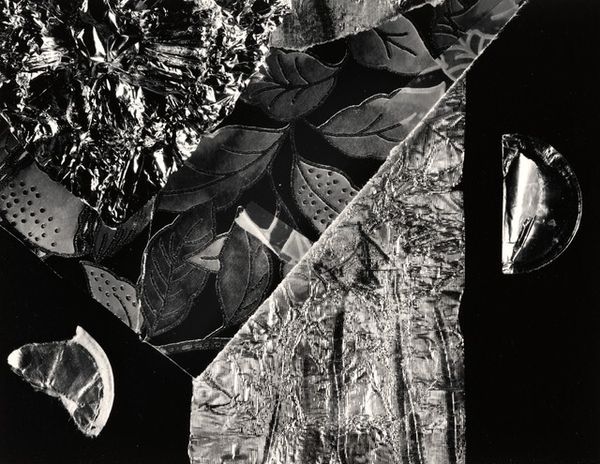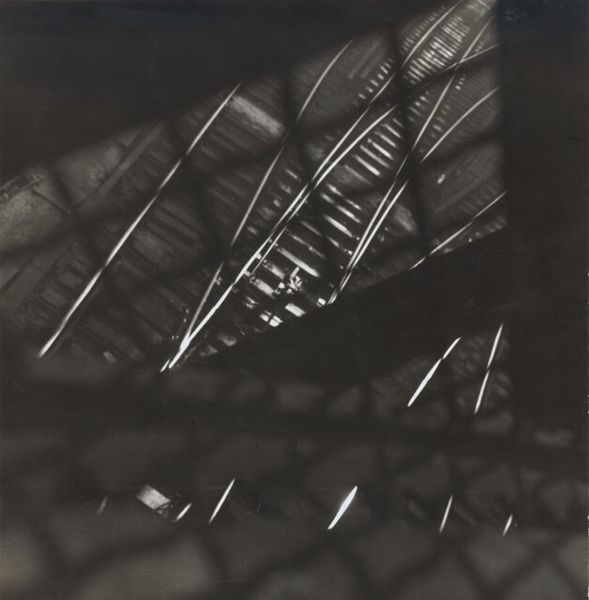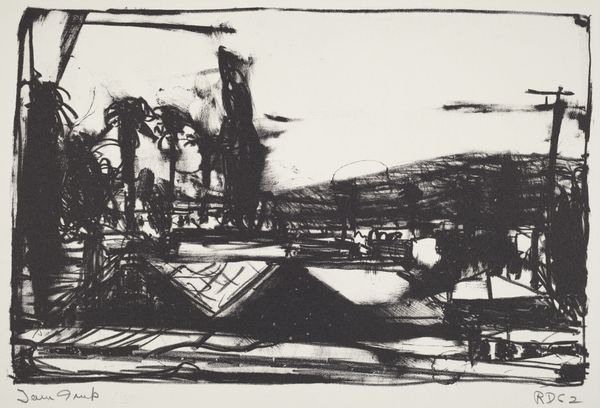
#
abstract-expressionism
# print
#
landscape
#
figuration
#
black and white
#
line
#
monochrome
Dimensions: image: 562 x 764 mm sheet: 562 x 764 mm
Copyright: National Gallery of Art: CC0 1.0
Curator: Let's take a moment with John Hultberg's print from 1963, titled "Escape in Anguish". Editor: The stark contrast immediately grabs me—it's almost claustrophobic. The dynamism created by all those lines conveys a tangible sense of anxiety, as if the subject were racing out of bounds or being engulfed by chaos. Curator: Indeed. Hultberg employed the print medium to its full potential, manipulating the densities and textures to establish visual hierarchies within his landscape. Looking closely, we can see how varied mark-making contributes to the emotional tenor. The heavy inks generate tonal complexity but, even so, how are we to assess it critically given the absence of color? Editor: That monochrome choice only intensifies its thematic exploration of isolation and disaffection. Consider how post-war anxiety, particularly within an era of Cold War tension and pervasive existential dread, permeates so many artworks of the period. Does the figure at the center succeed in the endeavor to get away or find a means for a more effective escape? Curator: It seems the very medium echoes this sentiment. We're left to ponder the role of mechanical reproduction; is it used here as an intervention, mirroring society, by bringing together individual experience and its mediation through broader technological structures? What commentary on originality can be made with respect to mass-made works like prints, lithographs, etc? Editor: This artwork speaks to the historical narratives of marginalization. Whose anguish is represented here? I perceive it to be perhaps those of refugees and migrants worldwide escaping oppressive situations only to become stuck in new precarious conditions. How does this frame questions related to forced displacement and cultural alienation even today? Curator: Fascinating. So, for you, the print process also amplifies an underlying unease, creating dissonance akin to lived experiences. But for others, its formalistic elements, in conversation with themes of labor, underscore our present state as observers or perhaps, complicit in a capitalist machine that constantly exploits this unrest. Editor: Whether metaphorically or concretely, Hultberg evokes very profound, lasting concerns. This piece calls out the shared, timeless anguish in us. Curator: A powerful statement of intent that persists as well because Hultberg’s command of material remains acutely compelling even now.
Comments
No comments
Be the first to comment and join the conversation on the ultimate creative platform.
